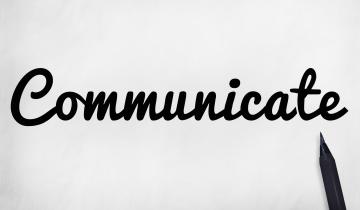Open Enrollment, like so many other HR processes, has become more challenging in recent years. The first obstacle was finding a solution to enrolling people online in the midst of a pandemic. As many companies were already moving toward electronic enrollment, the pandemic expedited that process along with so many others. Two years later, electronic enrollment is most commonly used, but there are still challenges.
Some employers have chosen to move to evergreen benefits, or those that automatically renew each year. Automatic enrollment is another option, which enrolls an employee into coverage unless there is an active waiver. But there are certain benefits that cannot automatically renew, such as the Flexible Spending Account (FSA) or the Health Savings Account (HSA). To boost awareness and participation, communication is critical—especially when a new benefit is introduced.
Regardless of how well you communicate, it seems that employee participation in the open enrollment process is a struggle. In order to increase engagement, surveying employees to learn more about what they like, value, or dislike about your current benefits package is a good start. Ask if they feel it is easy to use and understand. Ask about other benefits they may find value in. This information, paired with the utilization reports of current benefits, can help determine which benefits to offer.
People tend to pay more attention to and participate in things they are interested in, so make your message personal. Whether providing health and wellness benefits, lifestyle benefits, or financial security, demonstrate the value of the benefits and how they can positively impact the quality of life.
There are several methods that can be used to aid in effective open enrollment communication:
- Send texts or emails to announce open enrollment dates, meeting times, and how or when benefit information will be provided.
- Send texts or emails with a simple message about new benefits or substantial changes, such as “We’re adding an EAP!” or “Watch for upcoming information on how this new FREE benefit can benefit you!”
- Determine whether it makes sense to have in-person meetings, virtual presentations/ meetings, or a mix of both.
- Decide if spouses will be invited to attend enrollment meetings.
- Plan a live benefits fair for employees. If possible, invite representatives from the insurance companies and/or your broker to answer questions from employees.
- Consider a virtual benefit fair, which offers an accessible way to connect with both remote and on-site employees. You will need a virtual events platform and will need to decide the type of experience you want employees to have including networking opportunities, breakout sessions, and employee engagement techniques such as live polling.
Also, keep in mind that benefits may vary based on where employees are located. For example, there are a number of states that require short-term disability plans. Although offering those benefits is mandatory, it is still important for employees to understand how and when to use them as well as what the benefit amounts are. Employers may want to enlist the help of a benefit broker to determine any state-specific benefit requirements and provide educational information about them. MRA is also able to assist with information about state-specific requirements. The CCH Compliance Library, offered to MRA members through Wolters Kluwer, is also an excellent tool for finding state-specific information.
Regardless of the benefits offered, information needs to be understandable and clear. Simply providing plan documents—which are often full of legalese and insurance terms—fulfills the organization’s legal responsibility, but is typically overwhelming for employees. Providing scenarios of how benefits can be used may help to lure them into the conversation. For example, if you offer short-term disability insurance, create examples on how the insurance could be beneficial to them in the event of injury or illness.
In some cases, the obstacle to communicating benefits is literally in the language used, so assess the needs of your employees. Is there a need for enrollment materials to be offered in other languages? Should a translator attend any in-person meetings? Although the message may be the same for all meetings, the delivery might differ.
The method of enrollment can also influence engagement and participation in the process. Active open enrollment requires employees to either enroll in or waive benefits. This encourages them to think about and acknowledge the plans that are offered as opposed to a passive enrollment where employees are enrolled without taking action. With a passive option, there is a risk that employees will not make necessary changes.
If choosing active open enrollment, there are several ways to make it successful:
- Schedule either virtual enrollment meetings or a combination of on-site and virtual. For a completely virtual enrollment, create a video to provide an overview of benefits along with instructions on how to enroll or waive benefits.
- Online benefit enrollment through your HRIS/payroll system allows you to upload plan information and costs into the system. Create easy-to-understand screens for each benefit so employees can choose what is right for them. If offering benefits such as medical and dependent care FSAs, include a worksheet or video to assist with calculating the amount to defer.
- Offer “open hours” or individual appointments with an HR/benefits representative who can reiterate information that was presented, respond to personal benefit questions, assist with completion of enrollment forms, or allow employees to ask confidential questions.
- Take note of the questions employees ask. If the same questions are asked over and over, additional communication with clearer, more understandable content may be necessary.
- Three to five days before open enrollment ends, text/email a reminder. Text/email again the day before it ends. If you offer a completely electronic enrollment, there are considerations to ensuring the process flows smoothly.
- Technology. Is the program secure and easily accessible to the users? Is there a mobile app for convenience? Is there an option to set up a kiosk for employees who do not regularly access a computer (e.g., manufacturing)?
- Administration. Is the system easy to set up, use, and modify? Allow ample time to effectively select and set up the system and ensure the vendor is dedicated to helping resolve issues during setup and after implementation. It is critical to do thorough testing of the system before it goes live. Do this even if you have used the system before and particularly if you have made benefit changes.
- Transfer of information. Depending on the size of your group and the carrier’s practices, Electronic Data Interchange (EDI) may be available, which allows you to transmit enrollment information directly to the carrier.
- Compliance. Ensure that all required documents (e.g., Summary of Benefits and Coverage, or SBCs) are accessible. Include required notices such as Marketplace Coverage Options, Women’s Health and Cancer Rights Act (WHCRA), etc. Also audit enrollment for eligibility of dependents.
Once open enrollment closes, employers should ensure the enrollment information is captured. If using an online enrollment process, generate a census report to show which employees and dependents enrolled or waived each benefit. If you are not using an online enrollment process, create a spreadsheet listing eligible employees and dependents, indicating the level of coverage selected or whether coverage was waived. This can be started during the open enrollment period to monitor who has completed the process and who needs follow up.
Benefits have proven to be a focal point for employees, so understanding the benefits available and how to use them can be a benefit by itself. Helping employees understand how to access the benefits they need, and also understanding that some are not beneficial to their particular situation, can help drive loyalty and aid in retention.
For more information about state-specific requirements, contact your broker or the 24/7 HR-Hotline at 866-HR-Hotline (866.474.6854) or [email protected].





